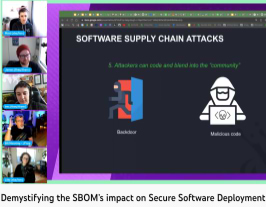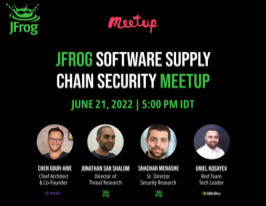Demystifying the SBOM’s Impact on Secure Software Deployment with Bill Manning @ SF Bay ISSA
August 24, 2022
< 1 min read
Join JFrog’s William Manning as he speaks in person at the SF Bay ISSA Chapter!
With the White House’s cybersecurity executive order in May 2021, the Software Bill of Materials (aka SBOMs), graduated from being a “nice to have” to a “must-have” global standard when developing and deploying secure software from the cloud? In a nutshell, SBOMs provide visibility into which components make up a piece of software and detail how it was put together, so it’s easy to determine if it contains security and compliance issues.
In this talk, we’ll discuss
► What exactly is an SBOM?
► Securing your Software Supply Chain
► Why SBOM must be a key element of your software development life cycle’s (SDLC) security and compliance approach
► The misconceptions that exist around SBOMs
► Insights and best practices on SBOM creation and usage.






